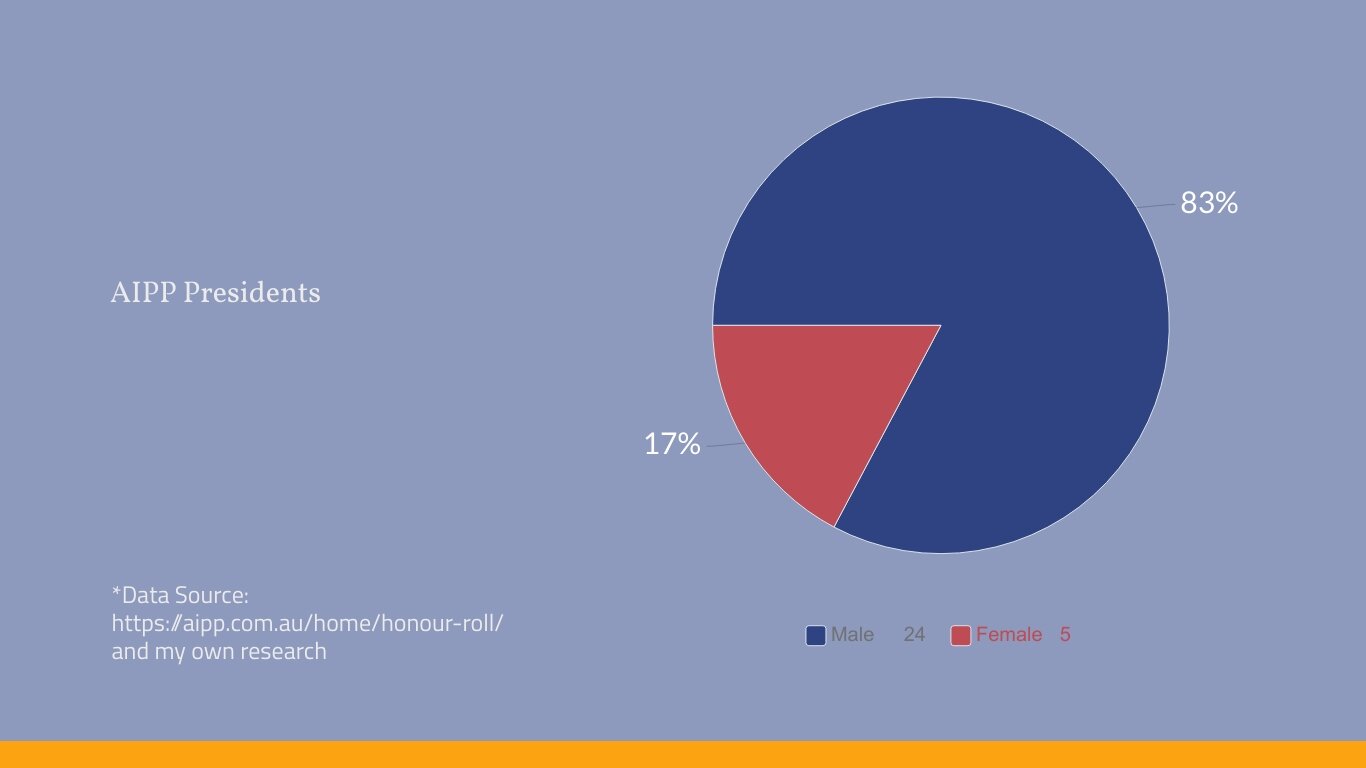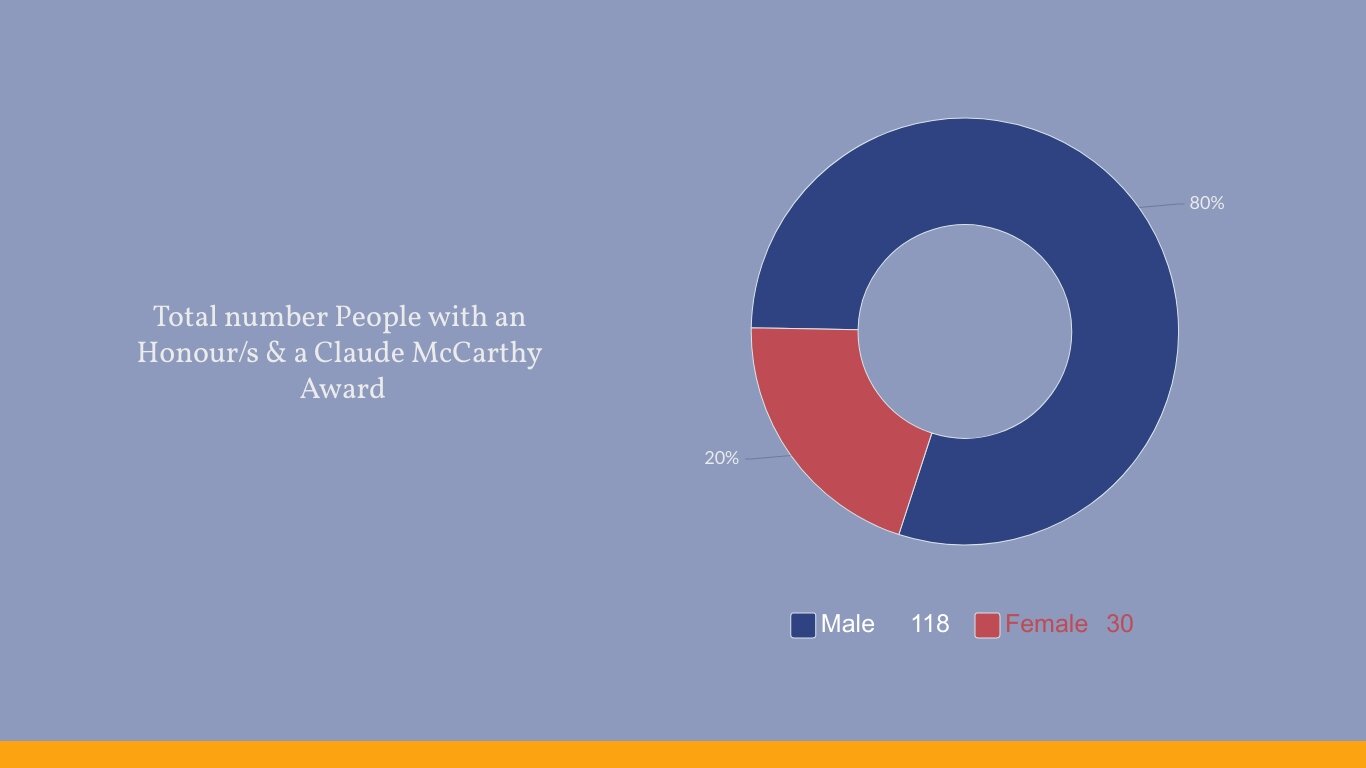Powers’ imbalance
In the past I have written about the lack of diversity within the Australian Institute of Professional Photography (AIPP). An article of mine called Diversity or D.I.E was published in the AIPP Journal and the un-censored version can be seen on my blog.
This report only discusses male/female inequality. If it was to include a more intersectional gender equality the results would be far worse. It is also impossible to illustrate any data on culturally diverse or indigenous people as until recently even gender data was not recorded.
When looking at the AIPP Board one can see quite clearly that it is far from representative of professional photography in Australia let alone photography in general. The current AIPP National Board female representation is 25%. Until 2019 when I ceased being a member of the AIPP, the State and Territory Councils had made good roads in tackling male/female gender equality at a local level. I am unclear as to gender ratio in the recently announced Chapters, which have replaced the relatively successful State and Territory Councils.
AIPP Presidents
The AIPP until recently has had an elected President and over the years they have been mostly male as you can see below. Maybe with strategic succession planning this result could have been much more equitable. However, there is one committee that has been operating for several decades that completely lacks diversity and that is the Honours Committee.
Honours Committee
The Honours Committee has remained proudly 100% male since the late 1980’s until 2018 when female member was installed by the Board in 2018. In 1989 the Committee had been re-instituted so that members change every 4-5 years. This has never occurred. When I left the AIPP the same three men had held their positions for several decades. Constitutionally, this is a failure and it suggests a level of power imbalance.
Honours “System”
If an AIPP member or industry representative wanted to nominate someone to be recognised for their dedication to the AIPP and/or industry the only way this can be done involves much smoke and mirrors as there has never been a public facing transparent system that allows you to do it. The level of transparency is 100% opaque. For many years and until 2019 the committee convened a face to face meeting held on Bruny Island, Tasmania. This meeting was done annually and members of the committee were flown to that meeting, at the cost of the membership. The announcement of new Honours each year was done at the AIPP Annual Photographic Print Awards (APPA) when members of the Committee were then flown to the event for the presentation, once again at the cost of the membership.
In an early version of the AIPP Articles of Association, AIPP members who did not enter the AIPP Annual Photographic Print awards (the majority of the membership!) could apply for their Master Photographer, based on the quality of their photographic commercial work. Likewise, AIPP members could also apply for a Fellow for their dedication to the AIPP and the photographic community but the quality of the commercial photographic work needed to be exemplary too. These descriptions and standards however were changed many years ago to what is currently on the AIPP website.
It also states on the AIPP website that the potential Honours recipient list is long and often takes years to process worthy individuals. If an efficient system is in place then honouring deserving members should be straight forward. Some people are seemingly deemed more worthy than others and to be recognised you need to be part of an exclusive clique. Recently, the disgraced high profile photographer and former AIPP Grand Master Photographer, Ryan Schembri had only been on APPA committee for only a few years when he was honoured for his dedication in 2014. Why was Mr Schembri honoured in 2014 when the was online evidence dating back to 2008 that allegedly discredits his business practices?
Men account for 80% of all Honours and Claude McCarthy awards, combined. (NB: The Claude McCarthy Award is not an Honour). When you compare the Claude McCarthy Award with the Honorary Life Member and the Honorary Fellow, there is little difference in the description, so you wonder why the need to have them all?
Involving Women
Over the recent years when researching inequality within the AIPP and photography in general, it has been mentioned to me that there were less women photographers and that results reflect that. When I joined the AIPP in the 90’s women were an untapped resource and the AIPP should have had a strategy to get more women as members at that time to help the organisation’s financial woes but instead they relaxed the application processes to gain more members generally. It would have been more productive to involve more women in the operational and decision making areas of the organisation, but this requires their priorities and needs to have been reflected in strategic development and planning. Societally, more women than men are primary caregivers and do the majority of the unpaid work and caring. If more women are present within leadership roles, it reduces bias and inequality and productivity is increased.
The Institute has changed considerably with many more women now in business as photographers and some as members of the AIPP. However the rate of recognising and honouring women photographers has not increased. When I left the organisation in 2019 the membership had a ratio of 70:30 women to men and yet the percentage of women receiving recognition was less than 20%.
As a side note, I created a list of some Australian women photographers that are truly worthy of being recognised by the Australian professional photography community. You can have access to my list here and I encourage anyone to add names of any women I have missed. I am sure there are many! Another couple of resources include The Women’s Register and also Photoria.
The Claude McCarthy Award
The AIPP proudly lists all their Honours on their website and its from this data I was able to create these graphs. Male members are mostly Honoured. Female members mostly receive the Claude McCarthy Award; almost 50% as can be seen above. However, when you consider the data of the Claude McCarthy Award; three wives of male Presidents were given this award and one other was a paid female employee. One awardee was a husband of a female President, and another was the husband of a paid female employee. I mention this as awarding paid employees and spouses then diminishes the value of this award for those who were neither paid or had a spouse. This behaviour is discriminatory.
Fellow of the AIPP
The honours of Fellow, Honorary Life Member and Honorary Fellow are all predominantly male as you can see below:
Two women who have been honoured were paid staff members. One woman self nominated for the honour. Fellow is the highest honour that the AIPP bestows, so it saddens me that less than 10% have been female. This extraordinary statistic is not only discriminatory but embarrassing.
Honorary Fellows
Honorary Fellows were originally set up to recognise non-AIPP members of the photographic community and yet many actual AIPP members have Honorary Fellows, too. Why is this? What purpose does it serve? If the members of the Committee included and equal number of women, could the results have been fairer?
Honorary Life Members
When comparing the Honorary Fellowships and Honorary Life Members there does not seem to be much difference in the description, other than women are far less likely to have one.
Multiple Honours
There are 25 people who have more than one Honour and 3 people who have 3 Honours each. The three people with 3 honours are all male. You can see the names of those with 2 or more Honours here.
A flaw in the ‘system’ is allowing some people be recognised several times. Why is this allowed? Are they truly worthy of being recognised more than once? Of the 25 members who received more than one Honour, 88% are male. Surely, by honouring people just the once, unless they did something truly extraordinary, would help more people being recognised and this would be fairer. All three male members of the Honours Committee have both a Fellowship and an Honorary Fellowship, which are the two highest honours to be bestowed. Surely, this could be considered a conflict of interest? Ironically, the female member of the committee only has the Claude McCarthy Award.
When analysing the data it is evident that the system and the Honours Committee and the AIPP Board have failed women. Women need to be involved to protect the future of the organisation and their priorities and needs must be reflected in the development, planning and decision making.
For true equality, the organisation needs to be proactive in this need for change. The Board needs to be more representative of the greater Australian community. It is each Board Members’ corporate responsibility that they have extensive Board and Governance experience. The Board members’ experience should include law and accountancy or at least have representatives on the Board who are lawyers or accountants so that any changes to the structure of the organisation or any administrative or financial decisions on behalf of the members are legally sound. The Constitution is the foundation of the Association and it is legally binding. It is the responsibility to the membership that each Board member adheres to it. If the Constitution states that diversity and equality and inclusion are important then the Board is responsible for enacting those rules.
There is a broad spectrum of working photographers in Australia who do not feel the need to be a part of a representative body like the AIPP, and there are many who have no idea it actually exists. As a former member of what I felt was an often great organisation it frustrates me that the Institute seems incapable of change, for fear they may upset a few. Ensuring each committee, chapter and Board have a gender balance would be a start.
Some have asked me why criticise now that I am no longer a member but it is because I still have hope there can be change. The AIPP is the only professional organisation to represent the industry in Australia. In the 20+ years I was a member I was incredibly active and opinionated, but in the end the inequitable power structures and powers’ imbalance that failed me. I fear I am not alone. The membership has withered and I know I am not the only one that has been and still is frustrated by the demise of an important representative body in Australia.
Hilary Wardhaugh
Photographer
Former AIPP Member







